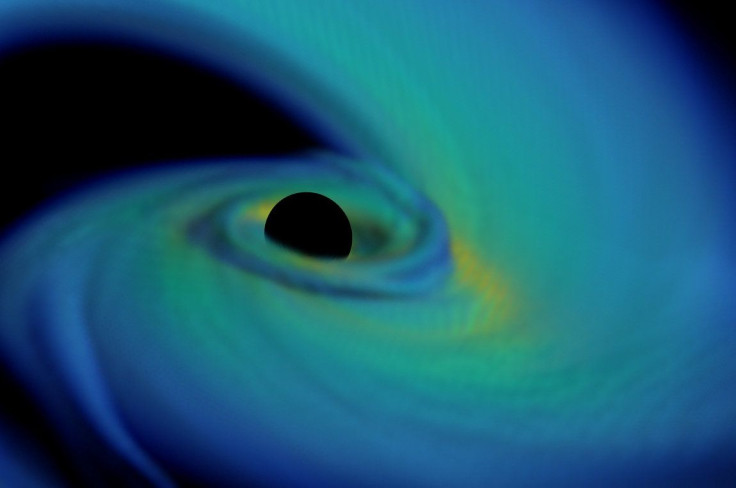Scientists Watch A Black Hole Collide With A Neutron Star

When a black hole and a neutron star collide, it might shower outer space with precious metals like gold and platinum while spewing out radioactive elements.
Scientists saw this in computer simulations as they were trying to learn what happens when these two dense objects merge. They hope being able to predict the result of these collisions will help them find the real thing as they scan the skies with their instruments, as well as better understand the role neutron stars play in the universe.
Read: Scientists Watch a Star Become a Black Hole
For there to be a collision between a black hole and a neutron star, there first has to be a big bang — a neutron star is what remains after a massive, old star explodes in a supernova, the biggest kind of explosion there is in outer space. The collapsed star core that is left behind is the neutron star.
It’s also possible that neutron stars themselves further collapse to create black holes. Either way, both neutron stars and black holes are incredibly dense, with tremendous masses packed into relatively small spaces. When they come together, the result is powerful.
The international team of scientists detailed their findings in two studies in the journal Classical and Quantum Gravity, with one paper focusing on what occurs during the first milliseconds of the collision and the other on what follows, as material is ejected and immediately forms a disk around the crash site.
The results of the simulations varied, with some run-throughs of the collisions showing the black holes completely consuming the neutron stars and others showing it burping out varying amounts of material after its meal, the Department of Energy's Lawrence Berkeley National Laboratory reported. When the two objects join forces, they turn into one larger black hole, and that monster might eat up some of the material that was spewed out or leave some of the radioactive matter hanging there in “an extremely dense, thin, donut-shaped halo of matter” that quickly spreads out.

Heavy elements are likely in that ejected matter, including gold, platinum and radioactive elements.
According to the lab, the simulations are about more than just creating a gruesome image of an enormous crash. They are also geared toward helping detect gravitational waves — disturbances in spacetime that stem from violent events — that result from these collisions so scientists could one day watch the real thing and learn more about our universe. Gravitational waves were recently discovered to be linked to two black holes crashing together, although a collision between a black hole and a neutron star would not create gravitational waves that are as strong.
“We are trying to move more toward actually making models of the gravitational-wave signals produced by these mergers,” researcher Francois Foucart said in the lab statement.
Read: These Black Hole Images from NASA Really Suck
The findings might also offer insight about resulting gamma ray bursts and radioactive material that telescopes might pick up while scanning the skies.
The lab says looking at matter that is spewed out when these simulated objects crash into one another, including its speed, size and composition, will assist astronomers who are searching the universe for real collisions to observe.
Neutron stars are also quite mysterious, and better understanding how they rip apart in a collision with a black hole could give scientists a window into their structure.
“With improved models,” scientist Daniel Kasen said in the statement, “we are better able to tell the observers exactly which flashes of light are the signals they are looking for.”
© Copyright IBTimes 2025. All rights reserved.




















